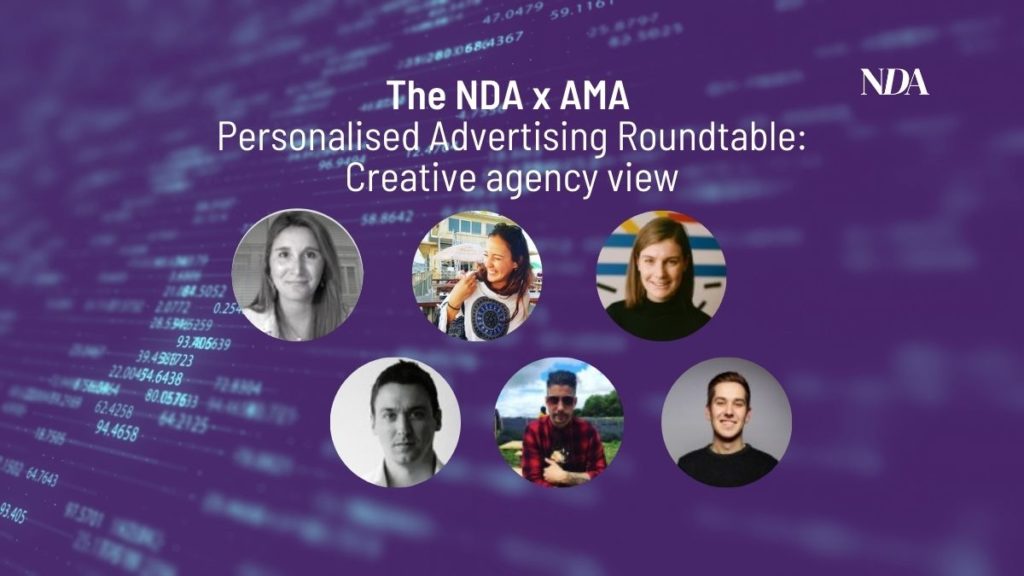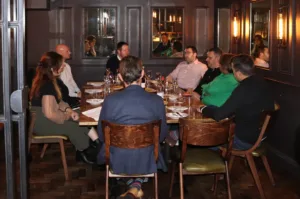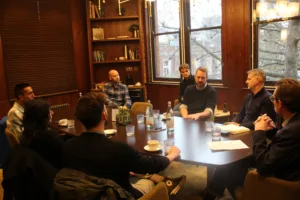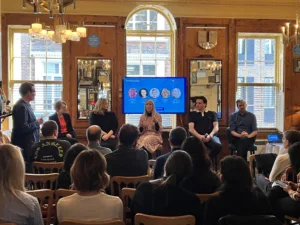NDA and A Million Ads recently held a roundtable to discuss personalisation and dynamic creative. We heard the thoughts of Kim Aspeling, Head of Creative Solutions at A Million Ads; Anna Pollard, Senior Producer at Hogarth Worldwide; James McAllister, Managing Partner, Content at UM London; Atalanta Purce, Account Manager at BBH London; James Kenrick, Account Director at Grey London; and Austin Hamilton, Associate Creative Director at FCB Inferno.
The subject of personalisation is one that is often spoken about within advertising, and is one that has become even more prominent over the last few years with all the talk around privacy, identity, and cookies.
Alongside this, the pandemic has seen a boom in audio, with loads more people now consuming digital audio content, such as podcasts for instance. And this has meant that more brands are taking an interest in running dynamic, personalised audio campaigns. But do they really get it?
Brand education
Hogarth’s Pollard feels there needs to be more education, because creatives and brands don’t quite have a full understanding of the capabilities there are for dynamic audio.
“People get stuck on ‘you can talk about the weather’, but there’s so much more than that. I think creative workshops would be useful, so that people have a much deeper understanding on both the client side and the creative side, because there’s a load more that hasn’t been tapped into yet,” explained Pollard.
“With all this personalisation, you’re not making one ad, you’re making thousands. It’s suddenly not just something that goes out and is a 30-second ad that no one’s ever going to hear. It’s a new route, a new direction, for something that’s been around for a long time.”
For A Million Ads’ Aspeling, though she agrees there is a need for education, there is an issue with having the time to actually get in and educate clients and creatives on what they could possibly be doing with their ads.
“From a creative’s perspective, they are so stressed. So, to try to give them an education on what’s possible and how to produce it, if they’ve never done it before, can be a real blocker,” said Aspeling. “When you’re on their type of time crunch, the last thing you want to do is learn about a brand-new platform, you just want to get in and sort it out. So, there’s a need to educate creatives on how personalisation can help them save time and amplify their creativity. The key is to have those conversations at the start.”
The timing issue is also something that FCB’s Hamilton and BBH’s Purce are seeing.
“Dynamic creative is often perceived to take a longer time to produce and because budgets are so tight, timings are tight and you get such little time to turn it around,” said Hamilton. “Unless all of that is explained crystal clear and upfront, they’re just going to get the guy in the booth and record whatever they were going to record anyway.”
Purce added: “The only issue we tend to run into is timing. And, quite often, we find out about dynamic audio quite late in the process. When we get the media plan, often we’re like, ‘oh, there’s dynamic audio’, which can be a bit of a curveball.”
Switching the mindset
Grey’s Kenrick acknowledges the barriers that exist due to a lack of understanding and lack of time available to explain dynamic creative, but feels it’s about proving to clients and creatives why they should be actively thinking about.
“The more that our clients see results from dynamic creative campaigns, the earlier they then start factoring it into their campaign development. And the same goes for creative teams: when they do something in the past, they start to get a feel for how to use it,” said Kenrick.
“We recently did a campaign with A Million Ads and, as soon as we had the brief from the client, it was actually the creatives that came up with the idea that it could work well with dynamic.”
According to UM’s McAllister, at the moment even when brands do build an understanding of dynamic creative, “addressable dynamic is seen as a tactical response”. Instead, McAllister would like to see dynamic as the way that his clients think about everything they do, in a truly dynamic by default fashion.
“You come up with an overarching advertising concept, and you think about personalising it to the audience at every single touchpoint,” he added. “Even if it’s a TV or cinema ad that isn’t going to be assembled dynamically, you should still be thinking about the different versions you can run at different times that speak to different parts of your audience.”








